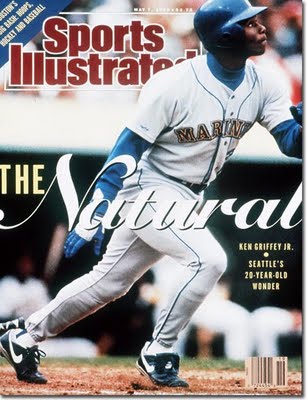
Michael MacCambridge, writing about Sports Illustrated on The Ringer:
SI’s news stories were never about telling you who won, it was about telling you why and how they won, the subtle differences that separated one world-class athlete or team from another, and the endless ways that people revealed their character through competition. Furthermore, what the magazine learned, again and again in the coming decades, was that a sports event being televised only increased interest in those stories. The more people saw of a sport, the more they wanted to read about it. And SI was there, to provide the best story, the deepest understanding, the telling picture, the last word. That, along with its role as gatekeeper and tastemaker—defining who and what was important in the world of sports—is what once made the magazine so indispensable.
I have a larger piece in the works about the place of Sports Illustrated in the modern media landscape, one that touches on the economic factors of magazines and media and online journalism. But for today, I want to focus on MacCambridge’s quote and the general theme of his Ringer article.
It’s impossible to understate just how important Sports Illustrated was to the generation of sports journalists to which I belonged. Thursdays were the best day, because the new issue was arriving. But, as MacCambridge’s piece pointed out, the magazine is dying and has been for nearly 30 years.
Why is Sports Illustrated so important? Why, years after the print edition was relevant, does it still matter to so many of us? Why do we look at its demise with such sadness and nostalgia?
One explanation — Sports Illustrated is a totem for sports journalism. It’s a symbolic structure.
Sociologist Emile Durkheim defined a totem as an item in a civilization that carries supreme significance within that society. This is the idea inspired by a literal totem poles. A symbolic structure is similar, in that it is a structure that carries more symbolic than practical importance. An example would be a college library. In this digital age, a physical library building with books may not be the most efficient use of resources, due to the presence of digital search engines, the cost of maintenance and collections, etc. But virtually no college would get rid of its physical library because of its symbolic importance to the college experience.
One example of this in the media world is a print newspaper. Think of the uproar, the hand-wringing, that occurs when a newspaper drastically reduces their print schedule. Even though print is an inefficient distribution model compared with digital, it still matters to a newsroom and a community when its print newspaper stops printing. For journalists, losing that daily newspaper has led to questions about their identity: Are they a newspaper? A website? A news organization? The notion of seeing print newspapers as a symbolic structure could potentially affect how reporters identify themselves and see themselves and the work they do. Again, professional identities that have been institutionalized and understood for generations may potentially no longer be as relevant in this digital age.
The same could be said for Sports Illustrated.
The print edition of Sports Illustrated is no longer vital in the sports journalism world. We have ESPN for scores and daily writing, we have local newspapers just a search bar away, we have The Ringer filling the space for feature writing. Increasingly, The Athletic is serving the role SI once did.
But Sports Illustrated still matters. Why? In a large part, not because of what it actually is but because of what it represents. Because of what it was, because of what it meant to all of us. Because it was the vessel for all of our dreams and aspirations.
Because Sports Illustrated is a symbolic structure.
Dr. Brian Moritz, also known as the Sports Media Guy, is an assistant professor at SUNY-Oswego. For more of Brian’s work, check out his website at https://www.sportsmediaguy.com/


